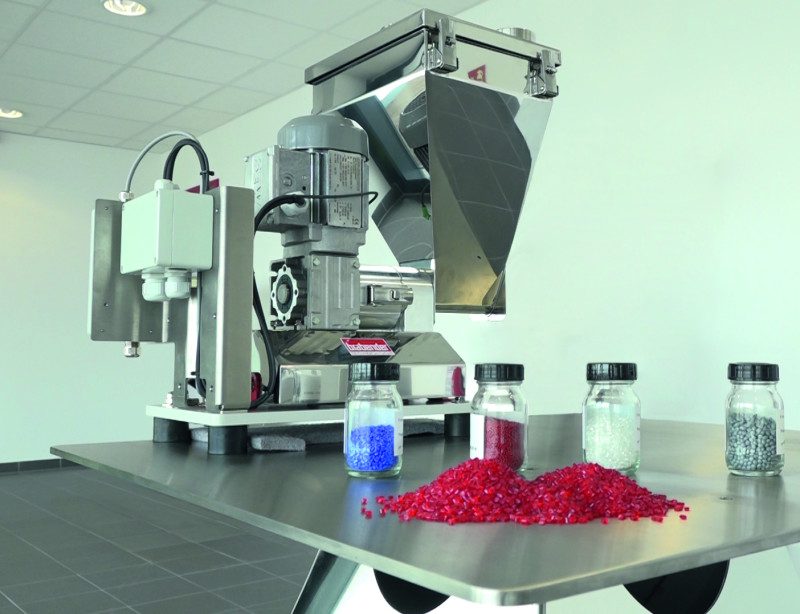What feeder for Liquids?

This of course is the wrong question as liquids aren’t generally handled by a feeder but are pumped or in some cases gravity fed from a vessel via a control valve. However, we can use a certain type of feeder for liquids.
Aside from the mechanism to move the liquid, gravimetric liquid feeders work in much the same way as any other loss-in-weight feeder for liquids. A weighed vessel holds a volume of liquid that is connected via a flexible connector to a pump, the control system uses the desired setpoint to control the speed of the pump’s motor to increase or decrease the feedrate to hit that setpoint. As the vessel empties, a point is reached when the vessel must be refilled and the controller must take account of this refilling period to calculate the correct pump speed. During a refill period it cannot use the loss-in-weight function as it is gaining weight, so the control algorithm takes this into account.
As liquids can behave with a uniform flow, loss-in-weight feeding may not be the only option. A pump connected to a flowmeter can also provide a feeding system with enough accuracy for many applications.
Using a feeder for liquids – configuration questions
The tank or vessel is the first area to consider. What is the correct material of construction? What volume do I need to hold? Should the tank be double skinned and lagged? Does it need a heating element to keep the liquid flowing? Very heavy vessels with only a small amount of volume for the liquid can pose some issues for the weighing system.
Next we need to think about the pump. There are dozens of different pump types and the pump manufacturer needs to be consulted to make sure the device is suitable for both the liquid and the feedrange. Some pumps may not have a very large turndown ratio and may struggle to run slow enough for the lower end of the desired range for example.
Connecting the outlet of the tank to the inlet of the pump is the third area for planning. A weighed vessel cannot have rigid connections that interfere with the weighing accuracy, there must be enough free movement to allow the load cells to work.
If you are using a flowmeter based system, then this issue is removed as there are no load cells in the design making the piping easier to design.
Testing different options is the best way to get an answer to this question. And tests need to be done as close to factory conditions as possible as issues such as temperature and humidity may well change the liquid’s handling characteristics.
A few days in the lab or with a rented machine on site will save dealing with unforeseen and expensive issues later on.
How we can help
As always the team at Genesis are here to help. We have seen hundreds of different product types and would be happy to discuss any of yours that you are concerned about. We’re also available to set up product trials so we can help you select the best configuration for your process line.
